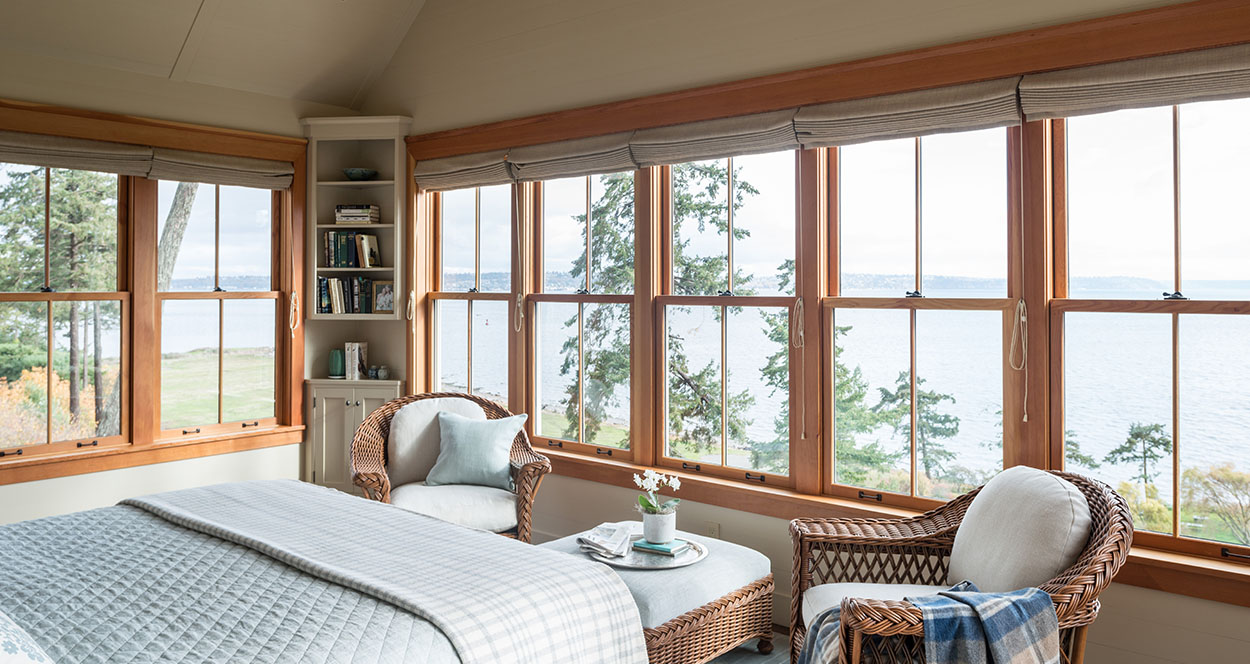Proper window insulation is important for a variety of reasons. For instance, you need to keep those parts of your home insulated to prevent excessive heat transfer. Insulation also helps with lowering energy bills and reducing interior noise.
Simply put, your home is better if your windows are insulated. Hopefully, you already have some form of insulation installed at this moment. If you do not, now is the time to change that.
In this article, we will highlight the different items and methods you can use for insulating windows. Go through the options below and pick out the ones that you feel will work best for your household.
Insulate your windows today and instantly make your home more comfortable.
Coat Cracks on Your Windows with Nail Polish
Let’s start by discussing the methods of insulating windows that most homeowners can handle without professional assistance. The first method we are highlighting here involves the usage of nail polish.
Get a bottle of nail polish and make sure you have a good amount on the brush. Allow some excess to drip back into the bottle; you do not want a mess.
Next, paint over the cracked glass using the brush dipped in the nail polish. Allow the nail polish to dry after application.
Once the first layer of nail polish has dried, you can apply another layer over it. Keep applying layers until you completely coat the crack but remember to let each one dry first.
Using nail polish is a temporary solution at best. After a while, the layers of polish will chip away, and you are dealing with the cracks again. Still, you should keep this method in mind if you ever need a quick fix for a cracked window.
Block Openings Using Draft Stoppers
Not all gaps that open up near or on your windows will be small. Some of them will be larger, so patching them up with nail polish will no longer be an option.
If you are trying to seal large gaps along the edges of your windows, you should consider using draft stoppers. You may also know them as draft snakes or door snakes.
Basically, a draft stopper is a large cloth tube filled with material. Manufacturers may use insulating material like batting or other objects to weigh it down.
Once you have the draft stopper, place it on the windowsill. Make sure that the draft stopper completely covers the gap. Keep the draft stopper jammed in there so it plugs that hole.
You can even make draft stoppers at home if you have spare pieces of cloth or even some large towels. They are good to have around the house to plug leaks quickly.
Hang Insulated Curtains
Insulating your windows can also be done by hanging some curtains. You cannot use any set of curtains. Instead, look for insulated ones.
For those who may be unaware, insulated curtains are made differently from the conventional curtains people use to decorate windows.
You can observe the biggest difference between conventional and insulated curtains by how they make them. Conventional curtains may only be fabric stitched together, whereas insulated ones have more material.
According to How Stuff Works, insulated curtains may feature high-density foam for blocking heat transfer and loud noises, a reflective vapor barrier to keep moisture at bay, and reflective film to contain heat within the room. Insulated curtains may also rely on magnetic strips to stick closer to the windows.
Given their material composition, you can easily see how useful insulated curtains are for regulating temperatures indoors. Get a set for your home if you are struggling with excessive heat transfer.
Cover Your Windows with Bubble Wrap
Bubble wrap is the packaging material that can sometimes be more fun to play around with than the actual item inside the package. Kids and adults alike enjoy going through large sheets of bubble wrap and feeling those bubbles pop.
Well, you should know that bubble wrap is useful not only for cushioning packages and impromptu popping sessions. You can also use it for window insulation.
What you want to do is prepare a sheet of bubble wrap that is the same size as your window. Preferably, use sheets with bigger bubbles because they are better for insulating windows.
Aside from the bubble wrap, you will also need some tape, water, and a spray bottle.
Begin by spraying the window with some water. Even misting the glass will suffice.
After that, position the bubble wrap next to the window. Get the tape now and start sticking the bubble wrap into place. Use multiple strips of tape to secure the bubble wrap if needed.
The bubble wrap should serve as another barrier preventing heat loss after it is installed.
Heat Insulation Film onto Your Windows
Perhaps you do not want to cover up your beautiful windows with bubble wrap. If that is the case, then you should use insulation film instead.
Insulation film is relatively easy to find because it is available in most supermarkets and DIY stores. They usually sell it in a kit with some double-sided tape.
To install the film, you should first lay down the strips of tape that will hold it in place. With the tape in position, you can place the insulation film over them. Press down on the film to make sure it sticks to the tape.
From here, you can use a hairdryer that is cranked up to high to get the film into the right position. Continue heating the film until such time that there are no more wrinkles present.
Install Magnetic Insulation
You can also use magnets to insulate your windows. Items that you will need for this DIY job include magnetic paint, magnetic tape, sheets of vinyl, and scissors.
Start by using magnetic paint to coat the sides of the window you want to insulate. Apply a few coats of the paint to the connection formed later on is secure.
Next, grab the vinyl and position it next to the window. Measure it to fit the window perfectly. Cut any excess material if necessary.
You can now place magnetic tape over the sides of the vinyl sheet. All that is left to do at this point is to stick the vinyl sheet to the window using the magnetic tape and the magnetic paint. Take your time and line up the vinyl sheet properly to provide maximum insulation.
Seal Gaps Using Caulk
Caulk is a sealant that you can use to plug cracks on home fixtures. It should be no surprise that you can also use it for window insulation.
The first thing you need is the right type of caulk. Latex caulk is what you should use to seal small cracks on the window sash. If the cracks are on the metal frame, you will need silicone caulk.
Caulk is pretty easy to use if you have a caulking gun. You can slide the tube into place, cut the tip open, and start applying the caulk. If you do not have a caulking gun, you can still apply the sealant by squeezing it out of the tube and using a putty knife to spread it.
The caulk will plug the crack after it dries and cures.
Note, you may need to remove some existing caulk before applying it again. You can also use a putty knife to remove the existing caulk.
Plug Gaps Using Rope Caulk
Caulk is an excellent item to use for repairing and insulating windows, but not everyone has a caulking gun or a putty knife. A small knife can work too, but it is not as easy to use.
Do not worry if you lack the tools needed for applying caulk; you can use rope caulk instead. As its name suggests, rope caulk is the sealant in a different form. You can pull strips of rope caulk away from the roll until you get the right amount of material. Use a knife to neatly cut away the strip of rope caulk from the rest of the roll.
You can now use the strip to plug the gap near your window. There is no need to use any adhesive because the rope caulk is sticky enough.
Create Tight Seals by Installing Weatherstripping
Weatherstripping is a specially manufactured material that you can use to seal small gaps along your windows. It is often used for garage doors, but it works for windows.
Choosing the right type of weatherstripping is critical if you want to create a proper seal. The United States Department of Energy has some pointers for choosing weather stripping.
The weatherstripping materials you should prioritize using include felt, reinforced foam, rolled vinyl, and tape. Weatherstripping that utilizes a tension seal also works well when paired with sliding windows.
Installing weatherstripping is easy enough.
You start by figuring out how long the strips you need based on the gaps you need to close. Once you have that information, you cut the strips down to size.
Next, run the strip along the gap you need to fill and begin peeling the adhesive. Stick the strip into place after removing the adhesive. Keep installing the strips until you have sealed the gaps entirely.
Utilize Secondary Glazing
Of the window insulation methods we have mentioned here, secondary glazing is probably the one you are least familiar with. It is worth learning about secondary glazing now because it is a viable long-term solution to your insulation problem.
Secondary glazing is basically a slim windowpane that you can install over your actual window. With the secondary glaze in place, it will create an empty zone between it and your window.
That empty zone will prevent heat transfer and the passage of noise. Even if there are gaps in your real window, the secondary glaze will still keep your home insulated.
Secondary glazing is great to use because you will barely notice that it is there. If you want to keep the view provided by your damaged window, installing secondary glazing is the move you must make.
Repair Your Windows
The damage to your window may be significant enough that trying to seal it using some of the materials we mentioned in this article may no longer be a practical solution.
The issue could also be related to faulty installation. The window may not be big enough to cover the space allotted for it.
If the issues you are dealing with are similar to the ones mentioned above, you may need to repair your window. Repairs will be costly, but they will be worth it. Opt for repairs if you want to resolve the issues affecting your windows for good.
Replace Your Windows
Finally, one more way you can improve your home’s insulation is by replacing your windows. Replacing your windows makes sense not only if you want to improve your home’s insulation.
Fixed windows are great replacement options for your current windows. You cannot open them, so you do not need to worry about imbalanced heat transfer.
You should also consider getting your windows replaced if you want to change up the appearance of your home. Those fixed windows are stylish and can be eye-catching home additions.
Fixed windows can also allow a good amount of natural lighting to enter your home. You can lower your electric bills even further by installing fixed windows.
Are you looking for new windows that can improve your home’s insulation and also elevate its appearance? If so, we at North Shore Window Inc. can present you with a wide array of replacement options. Contact us today if you are interested in purchasing new windows for your home!



